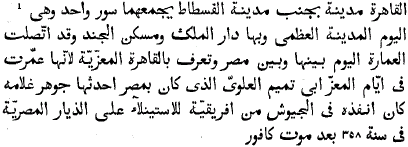Article contents
Art. VII.—The Name of the Twelfth Imám on the Coinage of Egypt
Published online by Cambridge University Press: 15 March 2011
Extract
Seventeen years ago the lamented M. Soret published a description of a most interesting silver coin struck at Miṣr in the year of the Flight 525 (A.D. 1130–1), bearing a name Abu-l-Ḳásim Muḥammad Al-Muntaẓar-bi-amri-lláh, which does not appear in the list of the Fáṭimí Khalífahs of Egypt, though the place and date of the coin would certainly lead us to suppose that it was struck by a ruler belonging to this dynasty. A remarkable circumstance is that the coin was struck during the reign of Al-Ḥáfiẓ.
- Type
- Original Communications
- Information
- Copyright
- Copyright © The Royal Asiatic Society 1874
References
page 142 note 1 Cependant Maqrîzî dit qu'El Hâfezh était le plus âgé des plus proches parents d'El Âmer.
page 142 note 2 [Here I must remark that M. Sauvaire has made a slight oversight: it was Prof. Tornberg who proposed the explanation here referred to, and M. F. Soret who gave it the preference over all others,—S. L. P.]
page 144 note 1 [Instead of this the British Museum dínár has ![]() .—S. L. P.]
.—S. L. P.]
page 144 note 2 [M. Sauvaire, in his letter, gives a French translation of this biography, but I thought it better to extract the whole intact from Ibu-Khallikán in the English.—S. L. P.]
page 145 note 1 [In this D'Ohsson agrees, translating grotte. Tab. Gén. t. i. p. 88Google Scholar (apud De Bacy). — S. L. P.]
page 145 note 2 Published in the Mémoires de l' Acad. des Inscriptions et Dettes-Lettres, vol. ix. 1831, pp. 284–316.Google Scholar
page 146 note 1 Both readings are intelligible: the former means ‘the expected by the command of God’; the latter ‘the expected for [executing] the command of God.’
page 147 note 1 My authorities for this account of the Capitals of Egypt are chiefly the Encyclopaedia Britannica, art. Egypt, of which the part relating to modern Egypt was written by my father E. Stanley Poole; MrsPoole, 's Englishwoman in EgyptGoogle Scholar; and Mr. Lane's MS. account of Cairo (forming part of his Description of Egypt), which I used to confirm the other two works. I may add that the account of the history of Cairo in Mrs. Poole's work has been republished abroad by a German Orientalist without the slightest acknowledgment.
page 150 note 1 
- 1
- Cited by


